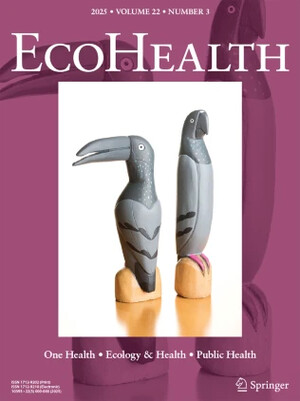
Population genetic structure of the elephant tick Amblyomma tholloni from different elephant populations in Kenya
Abstract
Understanding factors that shape tick population genetic structure is important as they may be exploited in crafting strategies for vector control. Amblyomma tholloni, or “elephant tick” is a three-host tick whose adults preferentially parasitize African elephants. The aim of this study was to determine the influence of fragmentation of the host populations on the genetic structure of this tick species from different ecosystems in Kenya, using the second internal transcribed spacer (ITS-2) and mitochondrial cytochrome oxidase 1 (CO1) loci. Population genetic analysis of ticks collected from four elephant populations using ITS-2 and CO1 loci revealed high gene diversity. Gene diversity at the ITS-2 locus was 0.91 and the nucleotide diversity was, 0.01. ITS-2 gene diversity was highest in Laikipia-Samburu ecosystem (0.947) and lowest in Tsavo (0.80). The CO1 locus also had high gene diversity, 0.790, and low nucleotide diversity, 0.006, and like ITS-2, gene diversity was higher in Laikipia-Samburu ecosystem (1.00) and lower in Tsavo (0.286). There was a modest statistically significant genetic differentiation among the four tick populations based on ITS-2 (FST = 0.104, P < 0.001; ΦST = 0.105, P < 0.001), and a 10% of molecular variance attributed to genetic variation between populations. There was also statistically significant differentiation among tick populations using haplotype frequencies for CO1 locus (FST = 0.167, P < 0.001) accounting for 17% of genetic variance among populations, but not modelled genetic distances (ΦST = 0.029, P = 0.095) suggesting very recent genetic differentiation. In addition, populations of A. tholloni in Kenya had a significantly negative Tajima D and Fu & Li's F* and D* at the CO1 locus suggesting recent positive selection. The extensive acaricide use in livestock, which host the larval stage, could be driving purifying selection and genetic hitchhiking of the CO1 locus. However, tests sensitive to demography such as Fu's FS, Ramos-Onsins & Rozas's R2 and raggedness index r were statistically significant at the ITS-2 locus suggesting ancient demographic expansion. Elephant population fragmentation appears to shape the genetic structure of A. tholloni, while agro-ecological factors could influence the genetic diversity of ticks.
Citation
King'ori, E.M., Obanda, V., Nyamota, R., Remesar, S., Chiyo, P.I., Soriguer, R. and Morrondo, P. 2022. Population genetic structure of the elephant tick Amblyomma tholloni from different elephant populations in Kenya. Ticks and Tick-borne Diseases 13(3): 101935.








